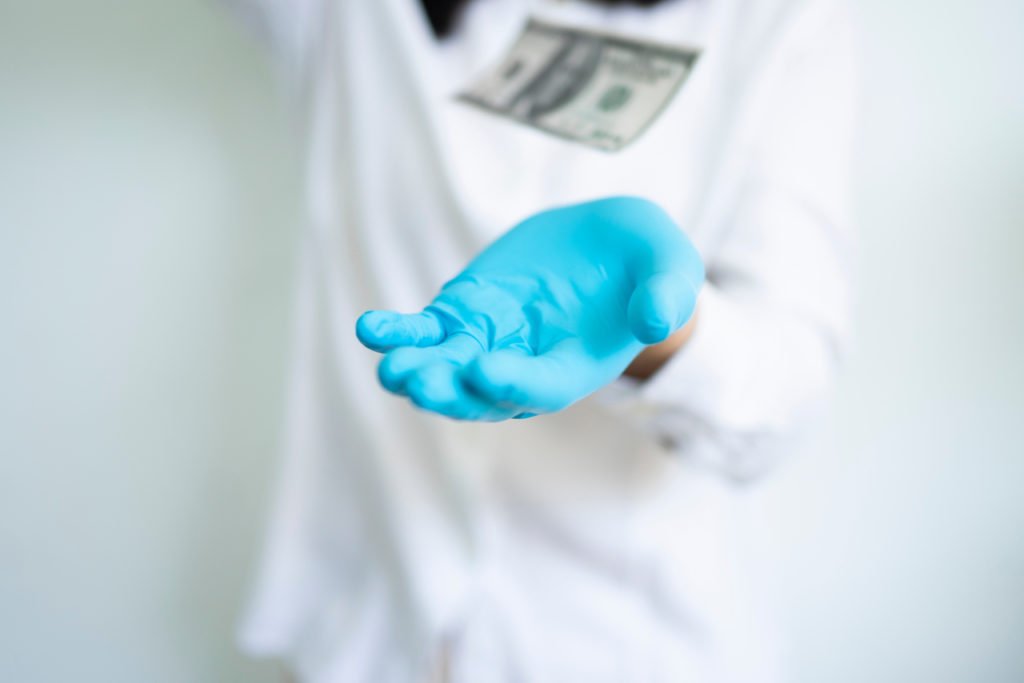Physicians across the country have delayed their bills to stay in business. They have sought out financial aid and other resources to maintain staff without furloughs and to see patients who were able to keep their appointments. It has been challenging.
Since the Coronavirus impacted the U.S., congressional lawmakers have passed rescue legislation in four different parts. So many months in, the first wave of the virus is still surging and providers in epicenter hot zones are taking on rising patient cases and the invisible enemy, once again. As the U.S. marks nearly 70,000 new cases of Coronavirus a day, the sunbelt has been designated the current COVID-19 epicenter.
Right when non-essential surgeries and other procedures were getting back on the schedule nationwide, governors in Texas and Florida have taken measures to roll back and halt reopening plans for non-essential surgeries in counties that are surging with COVID-19 in their states. Now, those lucrative sources of income that facilities and providers are dependent upon are off the schedule. The results are significant dollar losses from high-margin elective and non-emergent services, but there is also a high impact cost for patients in need of specific life-altering and life-saving procedures. In this grim moment, federal stimulus and other financial support mechanisms are still needed for the medical community to push forward.
Federal Bailouts: What’s Ahead
An additional economic aid package that is estimated in the trillions is under way for the leaders of the House and Senate to come to an agreement on. The two chambers will need to determine what’s in and what’s out by the end of July. Congress returns from its two-week recess on July 20th. With an August recess pending, Congress will have only 11 days from July 20th to July 31st to take the bill over the finish line. What’s on the table is the House-passed HEROES Act that dates back to May. The $3 trillion rescue package is for U.S. taxpayers and businesses, with more aid for state and local governments, and is also expected to offer more financial support to hospitals and providers. This round of economic relief payments includes the Paycheck Protection Program (PPP) that gives COVID-19 relief loans, essentially grants, to small businesses. The HEROES Act includes some changes to the PPP, which currently requires small businesses to use 75 percent of the monies for payroll expenses (or be required to pay it back as a loan).
The PPP application window was extended on July 4th when President Trump signed an extension of the application period for small businesses to request a Paycheck Protection Program loan, reports the American Academy of Family Physicians (AAFP). The application period was originally set to expire on June 30th, but businesses will now have until August 8th to apply. This buys Congress time to figure out what to do with the $134 billion that hasn’t yet been lent, and also decide on any further assistance for small businesses, reports Forbes.
The PPP was first launched to provide forgivable loans to small businesses that have been hard-hit by the COVID-19 pandemic to cover payroll and other costs. The Paycheck Protection Program EZ Loan Forgiveness Application Form 3508EZ is downloadable from the U.S. Small Business Administration (SBA).
In addition, the Department of Health and Human Services (HHS) had indicated in early June that the department was also planning for $10B for a future round of payments, which would be aimed at hospitals in COVID-19 hotspots.

Rescue Recap
Even before the Coronavirus forced hospitals to stop providing lucrative non-essential surgeries and other services, many smaller (rural-based) hospitals were already facing economic woes. The monies from the federal economic stimulus package through the Department of Health and Human Services were intended as grants to hospitals, with among other goals: Avoiding job losses in healthcare.
“… the Department of Health and Human Services (HHS) had indicated in early June that the department was also planning for $10B for a future round of payments, which would be aimed at hospitals in COVID-19 hotspots.”
These federal bailout funds, which were part of an effort to stabilize hospitals early in the pandemic, were a critical part of the CARES Act when it was passed at the end of March. There were several mechanisms in the CARES Act to assist in mitigating financial shortfalls due to COVID-19, reports American College of Physicians. The plan provided over $140 billion in appropriations to support the U.S. health system, $100 billion of which would be injected directly into hospitals. As for the earlier federal programs that were rolled out, “Each program provided a different amount of relief to differently situated practices,” says Todd Askew, American Medical Association (AMA) Senior Vice President of Advocacy. “There was no one program that was a panacea for everybody.”
Locums Now and Forward
What keeps resonating with me since the start of this pandemic is how we all keep functioning under such difficult circumstances. Our hospitals and healthcare system clients have stayed strong despite enormous difficulties, as have the providers we place at their facilities. The happenings of this year have required diligence and commitment by all of us. And yet, despite the current news, we are still looking forward. Our providers are embracing opportunities, ready to do what they do best: help serve the needs of patients in communities nationwide. And, that includes new providers who are working with Hayes Locums for the first time. When we say, “we are in this together,” we mean it.





